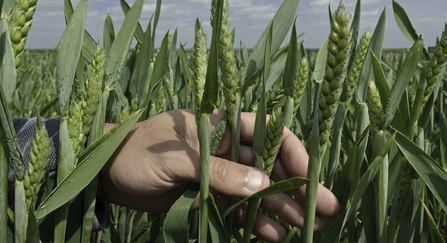What is it?
Companion cropping is simply planting two or more species together in the same crop. This can be beneficial plants planted with the main crops or under sown plants used for leys or living mulches. Two or more cash crops sown together is known as intercropping.
Benefits to the farmer:
- Planting beneficial plants can help your crop with pest control or pollination, providing nutrients, or acting as a nurse crop. These can all help to increase crop productivity.
- Diversifying the numbers of plants in the soils means a range of different root structures and lengths can be achieved, increasing drainage and storing more water.
- An increased variation in plants will also increase variation in the bacteria and fungi in the soils creating a more resilient soil ecosystem that helps during times of stress (e.g. droughts, persistent weeds and pests)
Benefits to wildlife:
- Increasing diversity within the productive field means more species can thrive in this area, creating more space for nature on your farm.
Points to consider:
- Selecting compatible companion crops is essential to ensure results are beneficial to your crop.
- Intercropping can be more difficult to plan if the crops require different machinery, growing times etc.
Useful resources:
- https://ahdb.org.uk/news/can-companion-crops-give-osr-the-edge-over-csfb
- https://www.agricology.co.uk/resources/intercropping-and-companion-cropping-arable-systems

Farm manager Chris Bailey inspecting wheat crop at RSPB's Hope Farm. May 2011. - Chris Gomersall/2020VISION
